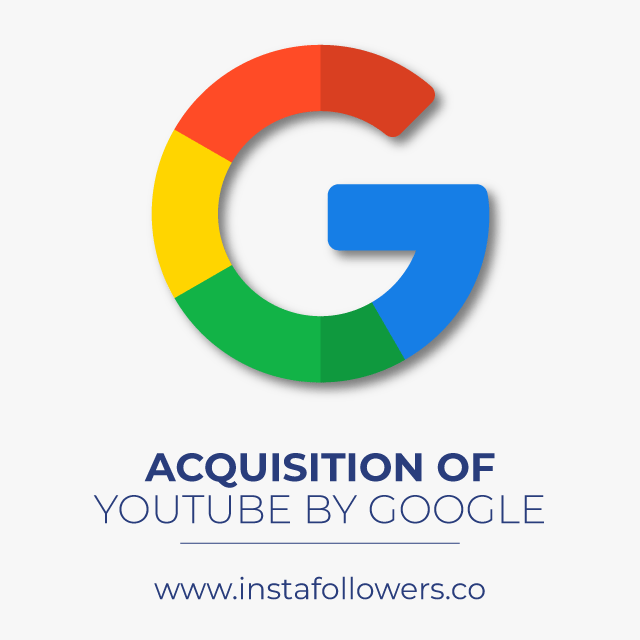In a groundbreaking move, Google acquired YouTube in 2006, marking a pivotal moment in the evolution of online video platforms. At the time, this fledgling site had yet to turn a profit, but it captured the imagination of many, including a visionary Google employee. Spearheaded by Susan Wojcicki, who would later become the CEO of YouTube, this acquisition proved crucial for fostering YouTube’s potential as a major player in the entertainment landscape. The acquisition wasn’t just a financial leap; it opened new avenues for user-generated content, transforming how we perceive video culture today. Dive into the fascinating YouTube history that leads us from this initial purchase to the rich tapestry of YouTube video culture we enjoy now, a testament to the entertainment potential that was recognized back then.
The moment Google decided to take control of the leading video-sharing platform, YouTube, it paved the way for an entire generation of content creators. This acquisition not only introduced innovative features into the digital market but also reshaped the way audiences consume media across the globe. With Susan Wojcicki at the helm, the digital landscape experienced a transformation that recognized the power of user-driven content. What began as a simple platform for video sharing evolved into a cultural phenomenon that influences entertainment and social interaction today. Explore how this merger of tech and creativity has led to a revolution in how people engage with video entertainment and the vast potential it holds.
The Dawn of YouTube: Google’s Strategic Acquisition
In 2006, Google made a pivotal decision that would reshape the online video landscape forever by acquiring YouTube. At that time, YouTube was not yet profitable, but the sheer potential of its content was undeniable. The acquisition, funded by $1.65 billion, marked the beginning of a new era for digital media, showcasing Google’s foresight in recognizing the immense value of user-generated content. This strategic move not only broadened Google’s ad revenue capabilities through video advertising but also positioned them as a leader in an emerging entertainment industry that was gaining momentum globally.
The decision compellingly echoes Susan Wojcicki’s vision for YouTube, which she articulated when she saw the potential of user-created videos to democratize content production. This was a transformative moment, highlighting a shift in how entertainment could be consumed and created without the constraints of traditional media studios. Her insight not only justified the investment but ultimately set the foundation for YouTube’s subsequent rise to becoming a cultural phenomenon.
Frequently Asked Questions
What led to Google’s acquisition of YouTube in 2006?
Google acquired YouTube in 2006 for $1.65 billion, sparked by the recognition of YouTube’s immense potential in video content creation. The pivotal moment came when Susan Wojcicki, then Google’s Senior VP, watched a viral video of two boys lip-syncing to a Backstreet Boys song, realizing the platform could revolutionize entertainment and user-generated content.
How did the YouTube history influence Google’s decision to invest?
The YouTube history played a crucial role in Google’s decision to invest, as the platform demonstrated massive user engagement and potential for virality. The idea of a place where anyone could create and share content was compelling enough for Google to see YouTube as a valuable asset in the burgeoning video culture.
What was Susan Wojcicki’s role in the Google YouTube acquisition?
Susan Wojcicki, who is now the CEO of YouTube, was pivotal in the Google YouTube acquisition. As Google’s Senior VP for AdSense and AdWords, she was responsible for exploring video initiatives and her discovery of an inspiring YouTube video led her to advocate for the acquisition.
What impact has the Google YouTube acquisition had on video culture?
The Google YouTube acquisition has significantly influenced video culture by transforming how content is consumed and created. It established YouTube as a central hub for entertainment potential, allowing millions of creators to reach global audiences and reshaping the landscape of video marketing and online video consumption.
Is YouTube still a valuable platform for entertainment after the Google acquisition?
Yes, YouTube remains a vital platform for entertainment, especially following the Google acquisition. It has evolved into a hub for creators of all kinds, offering diverse content and enabling grassroots filmmakers and entertainers to gain visibility and profit, which has continuously enriched its video culture.
| Key Points |
|---|
| Google acquired YouTube in 2006 for $1.65 billion. |
| At the time of acquisition, YouTube was not yet profitable. |
| The turning point for the acquisition was a viral video of two boys lip-syncing to a Backstreet Boys song. |
| Susan Wojcicki, now CEO of YouTube, was instrumental in recognizing YouTube’s potential after watching the viral video. |
| Wojcicki was Google’s Senior VP for AdSense and AdWords when she recommended the acquisition. |
Summary
Google acquires YouTube was a pivotal moment in internet history that transformed the way people consume and create video content. In 2006, Google made this strategic move, initially recognizing YouTube’s untapped potential despite its lack of profitability at the time. With this acquisition, Google not only expanded its advertising reach but also established a dominant platform that now hosts billions of videos created by users worldwide. The forward-thinking decision by Susan Wojcicki demonstrated the foresight needed to embrace the future of online content creation, marking the beginning of YouTube’s evolution into the leading video-sharing platform it is today.
